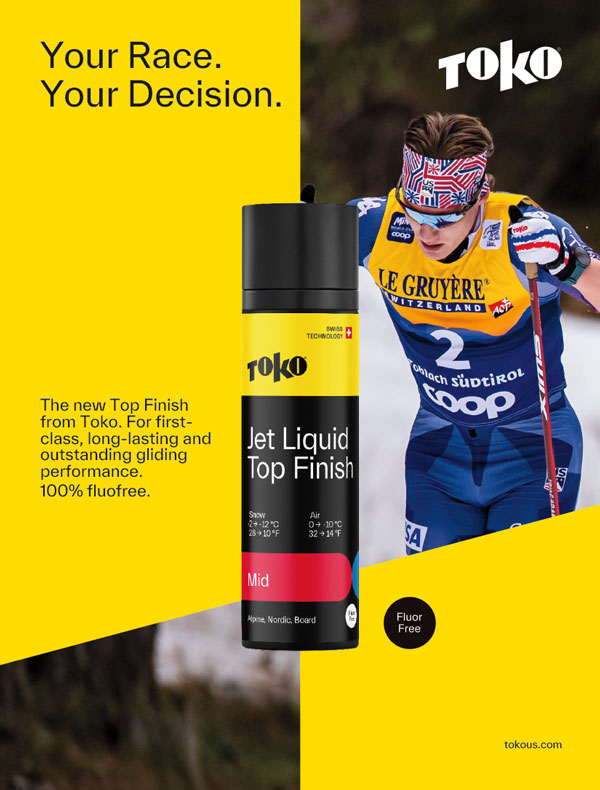
The Jizerska Padesatka, Ski Racing in Bohemia
Thu, Feb 7, 2008 - By Mark Madorski
This year I traveled to the Czech Republic to participate in my 9th Worldloppet race, the Jizerska Padesatka. I’d wanted to go to the Czech Republic (Prague, in particular) for at least ten years and here was my perfect excuse. On top of this the race is held in the tiny town of Bedrichov (outside the city of Liberec in the region of Northern Bohemia). This area butts up to the Polish border and isn’t far from the birthplaces of my paternal grandparents. Seeing this part of the world was also something I’d always hoped to do.

I arrived in Prague early on a Friday morning after an overnight flight from Detroit. I rented a car and did the two hour journey up to the city of Liberec. I didn’t find driving in the Czech Republic particularly easy compared with other European countries. The freeways are pretty well marked but the lanes are narrow and the traffic in and around Prague is atrocious (more trucks than I’ve ever seen in one place). When I got to Liberec, a fairly large city, my map did me little good as street signs are nonexistent. It’s a good thing my hotel was in the middle of town and by following signs to “center” I got into the general vicinity and eventually found the hotel.
The city of Liberec, where most skiers in the race stay, contains the race headquarters and lies at the foot of the Jizerske Mountains. It’s a pleasant town with some nice architecture (like the old town hall) and some good restaurants and pubs. The actual ski area, however, is in Bedrichov, about a twenty minute drive up the mountain. The car really came in handy here but if you don’t have one, a bus leaves the center of Liberec (for Bedrichov) about every half hour. The drive up is very picturesque with switchbacks cutting through old pine forests.

Bedrichov
The snow pack was plentiful and I took full advantage of some beautiful trails to ski out the kinks, so to speak, from my long journey. Since the race is classic in style (I figured I’d have enough classic skiing during the race) I decided to primarily skate in the days leading up to it. The only exception was that I played around with my classic skis trying to judge the grip I would need for race day. The temperature had risen above freezing in the two days prior to the race creating some hard / icy tracks. The Swix representatives decided that we’d probably need a klister base (purple) covered with hard wax in order to hang onto our grip for 50 kms. I heeded this advice all the time realizing that the wild card was the condition and temperature of the track out in the middle of the course.
Race day dawned clear and relatively cold. I got to the start two hours early and met several Americans from Wisconsin and Illinois hanging out in the warming tent. I tested my skies and found they had a bit too much grip but decided what the heck-- it was still early and it was bound to warm up. I took off in wave three and immediately realized I was still over waxed. I rationalized that this was probably better than being under waxed as the first 32 kms of the Jizerska Padesatka feature some significant climbs.  Right out of the gate there is a fairly strenuous uphill but it’s at kilometer four that the first really serious climb begins. During the next four or five kilometers, we gained nearly 800 ft in elevation and although the climb is long and at times grueling, it’s almost entirely skiable. None of it required anything remotely close to a herringbone.
Right out of the gate there is a fairly strenuous uphill but it’s at kilometer four that the first really serious climb begins. During the next four or five kilometers, we gained nearly 800 ft in elevation and although the climb is long and at times grueling, it’s almost entirely skiable. None of it required anything remotely close to a herringbone.
The terrain was much more mountainous than I had expected and the scenery more beautiful. The mountains reminded me of some of the smaller mountains and larger hills one encounters when skiing in Vermont and New Hampshire. On the initial large climb, we actually skied through a cloud before breaking out into almost blinding sunshine. By this time, my skis were really slowing down so I had ample time (a little more than I wanted) to enjoy the incredible vistas. Much of the course traverses young pine forests and a fresh coating of snow added to its ambience.
As far as my skis were concerned, what I had worried about came to pass. Kilometers 10 – 32 saw the icy tracks replaced by powder and my glide slowed accordingly. I probably should have pulled over and shortened my wax zone a bit but for some reason I can never make myself do this. I observed several skiers next to me getting up to a foot or more of glide on every kick; oddly enough, it was most dramatic on the up hills. I’m not sure how much time I lost in this twenty kilometer stretch, but I know it cost me energy wise and made my recovery a bit tougher in the days following the race.
After several more long climbs (one that went on steadily for over two kms), we finally reached Kilometer 32, the summit of the race. At this point we started a long descent that eventually turned into a very gradual down. By the time we reached kilometer 40, my glide improved dramatically and I began passing everybody on the course (back to the icy tracks). I made up at least some of my lost time and finished fairly strong. My time of 4:03 put me just a little better than mid pack.

That night I went out to a local pub to celebrate and watch hockey with some other racers I had met. Eating out in Prague can be quite pricey but in Liberec (and I would assume most outlying areas) it’s very reasonable. A huge platter of Czech food (beef goulash, potatoes, vegetables and dumplings) and two large beers (20 oz) cost well under $10.
The next day, after an early morning ski, I headed back to Prague where I returned my car and checked into the Archibald Hotel located right in the heart of historic Prague. If you haven’t heard (you’re probably the last one), but Prague is one cool city! It is one of the few major cities in Europe to escape bombing in WW II and therefore retains a medieval air. The 650-year-old Charles Bridge connects the two oldest parts of the city, one featuring Prague Castle and the other the Old Town Square. One evening I sat in an outside café in the square (they have propane heaters that enable you to sit in your shirtsleeves) sipping some of the world’s finest beer and watched the sun set on the historic town hall. When I related this experience to a friend he described it well as one of those “perfect moments.”

Prague also has one of the best-preserved Jewish ghettos in the world as well as some of the finest examples of Art Nouveau architecture anywhere. The Municipal House (built at the turn of the last century) was a collabotrive effort by some of the best known architects in Europe and is visually stunning! For my money, it’s the most beautiful Art Nouveau building in the world.

And then there’s the beer… The Czech Republic is a beer connoisseur’s paradise. They may not brew the best beer in the world, but they’re definitely in the top five; as far as the seriousness with which they approach this task, they’re in the top three. Pilsner, one of the world’s most popular styles of beer, had its birth in the town of Plzen. The Pilsner Urquell Brewery (in Plzen) continues to brew the tastiest, most authentic, most sought after and unique pilsner in the world. The Budvar Brewery claims to be the real Budweiser and has been in a legal battle (over the name) with Anheuser- Busch for many years. They market their product as the “Original Budweiser” in much of the world, but because of the legal battle it’s called Budvar (if you find it) in the U.S.
These beers are exceptional in quality (along with over 100 others) but what I found most interesting was the importance of beer on the national psyche. Czech beer halls are institutions in themselves. The men who pour at these establishments are licensed by the government. Inspections are regularly made on facilities, equipment, etc. Most establishments serve only one or two types of beer and religiously promote them. Very little food is consumed at a traditional beer hall and the sheer quantity of brew consumed is amazing. At U Zlateho Tygra (The Golden Tiger), one of the most popular places in Old Town, I observed a man pour for over an hour without stopping! He had a unique style and from the look on his face I determined he was taking his job very seriously. Famous Czech books and plays reference beer, beer halls, and those who work at them on a frequent basis. The Czech Republic is one serious beer drinking nation!
The Czech Republic is a great travel destination in its own right but if you add to it a world class Nordic ski race, you may have the ingredients for the trip of a lifetime.
Na shledanou and happy ski travels.
[ Mark's a member of Team NordicSkiRacer.com. Go Mark Go! ]
